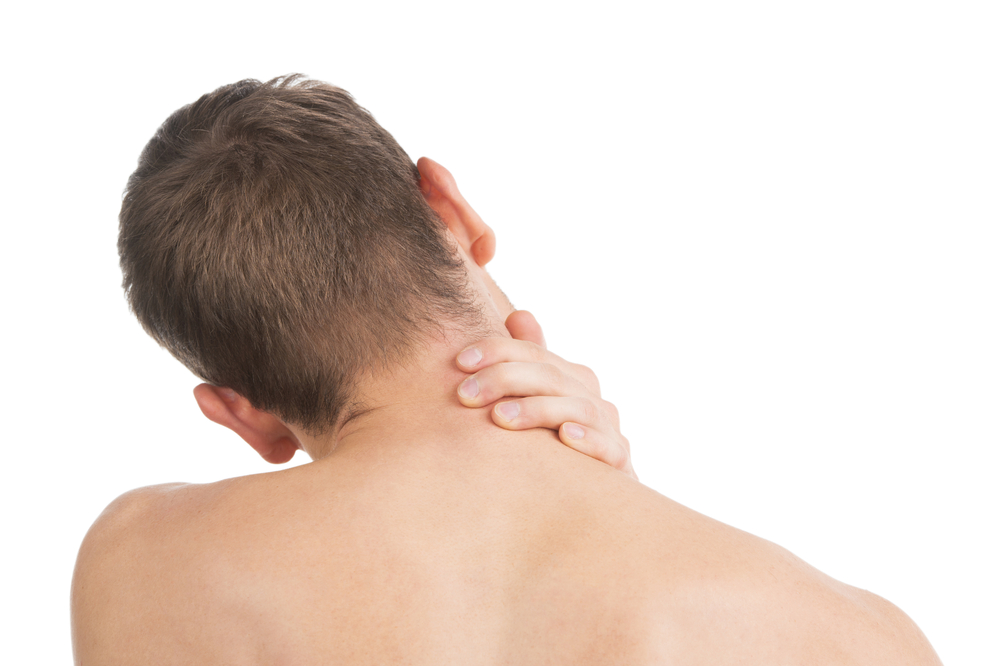Neck posture is often assumed to be a cause of neck pain, however, there is little research evidence to support this. Neck muscle strength is a different story though as there are links to certain neck muscle weakness and neck pain.
People with neck pain have been shown to have a different pattern of neck movement to those without pain. Deeper muscles in the front of the neck activate less (Longus Colli and Longus Capitus) and the more superficial ones activate more (sternocliedomastoid and anterior scalenes) when bending the neck forwards. These superficial muscles are also activated more intensely and less efficiently in individuals with neck pain compared to those without when balance is challenged. This may lead to increased neck pain and tension.
Strengthening neck muscles has been compared to no treatment and pain scales reduced significantly by 60-70 percent with strengthening versus 28 percent for no treatment. Strengthening has also been shown to reduce superficial muscle over-activity in neck muscles which also reduces pain. A randomized controlled trial published in October 2019 has shown that manual therapy with strengthening exercises is more effective than the usual physiotherapy care (manual therapy and range of motion exercises).
Interestingly, strengthening the muscles of respiration also reduces neck pain, according to a study in 2016. Neck disability and strength improved after 20 sessions of breathing exercises with a resistance device. The exact reason for this is unknown but a change in inefficient breathing patterns allowing the neck accessory muscles of respiration (scalenes and sternocliedomastoid) to relax, and for the diaphragm to work more efficiently, is a possible explanation.
Deciding which muscles need strengthening requires an assessment from a physiotherapist with experience. Strengthening may involve the deep neck flexors, superficial neck flexors, lateral flexors, rotators, but not so usually the neck extensors, as these are usually strong, even with neck pain or injury. Incorporating strengthening exercises into to your daily routine will help to reduce neck pain in the longer term.
References
Domingues L, Pimentel-Santos FM, Cruz EB, Sousa AC, Santos A, Cordovil A, Correia A, Torres LS, Silva A, Branco PS, Branco JC. Is a combined programme of manual therapy and exercise more effective than usual care in patients with non-specific chronic neck pain? A randomized controlled trial [with consumer summary]. Clinical Rehabilitation 2019 Oct;33(12):1908-1918
Falla D, Jull GA, Hodges PW. Patients with neck pain demonstrate reduced electromyographic activity of the deep cervical flexor muscles during performance of the craniocervical flexion test. Spine: October 1, 2004, 29(19) 2108-2114.
Jull G, Falla D, Vicenzio B, Hodges PW. The effect of therapeutic exercise on activation of the deep cervical flexor muscles in people with chronic neck pain. Manual Therapy 2009 14(6) 696-670.
Juul-Kristensen B, Clausen B, Ris I, Vikaer J, Rikke, Fischer S, Rasmus, Samir C, Shadi, Birk J, Marie, Sogaard K. Increased neck muscle activity and impaired balance among females with whiplash related chronic neck pain: a cross sectional study. Journal of Rehabilitation Medicine: 2013, 45(4) 376-384.
Wirth, B; Ferreira, T Duarte; Mittelholzer, M; Humphreys, B K; Boutellier, U (2016). Respiratory muscle endurance training reduces chronic neck pain: A pilot study. Journal of back and musculoskeletal rehabilitation, 29(4):825-834.
Ylinen JE, Takala EP, Kautianinen H, Nvkanen M, Hakkinen A, Pohjolainen T, Karppi SL, Airaksinen O. Effect of long term neck muscle training on pressure pain threshold: a randomized controlled trial. European Journal of Pain: December 2005 9(6) 673-681.


